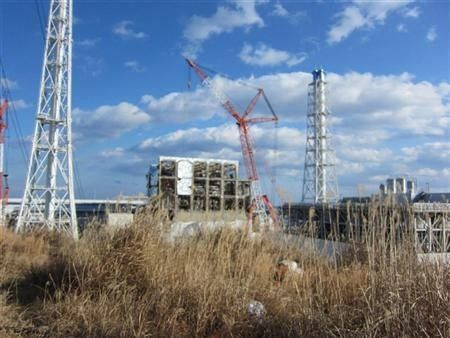Fukushima Makes Kids Fat: Japanese Parents Weigh New Health Dilemma

Explosions at a nuclear power plant in Japan’s Fukushima prefecture are beginning to have some measurable effects on civilians’ health in nearby areas -- but not in the way you’d think.
When an earthquake and tsunami battered the country’s eastern reaches in March of last year, the associated power loss at the Fukushima I Nuclear Power Plant shut down cooling systems and spawned multiple reactor meltdowns. A series of explosions resulted in a radioactivity burst that immediately threatened everyone within a 12-mile radius, prompting a frenzied evacuation.
Radiation released by the Fukushima disaster has caused no known fatalities so far. Government officials have downplayed the remaining risks, although many civilians continue to be wary of spending too much time outdoors near the plant, which is still shuttered.
Their caution may be warranted, but it is having some unforeseen ill effects. A Dec. 25 report by Japan’s education ministry shows that children in Fukushima prefecture are experiencing highers rate of obesity, a result of spending more time indoors to avoid potential radiation exposure.
Education authorities have confirmed that students close to the nuclear plant are no longer allowed to play outside as much as they used to, according to the Japanese newspaper Asahi Shimbun.
“Children cannot play outdoors [even apart from gym classes], so they now engage in less physical exercise," said one education official. "That may be one cause."
Today, most children in Fukushima prefecture are allowed to play outside. When the data for the education ministry’s report was gathered in the spring of this year, only 98 public elementary schools -- a bit more than one-fifth of the total 481 -- still had restrictions on outdoor activities, Asahi Shimbun reported.
Things were worse during the summer of last year, when 313 schools -- nearly two-thirds of the total -- implemented restrictions. Although the cautionary measures were mostly temporary then, their effects are evident now.
The education-ministry report found that about 4.86 percent of 5-year-olds in Fukushima prefecture weigh at least 20 percent more than they ought to for their height, meeting Japan’s official criteria for obesity. Across the county, the obesity rate for 5-year-olds is just 2.39 percent.
Fukushima has the heaviest 5-year-olds in Japan, and the same holds true for kids between the ages of 6 and 9, as well as for those from 14 to 17. The prefecture has always had higher obesity rates due to cold temperatures prohibiting outdoor activity, but never before has the difference been so pronounced.
Compared with the West, however, even Fukushima’s obesity rate is minuscule. In the U.S., for example, children between 2 and 5 have an obesity rate of 12.10 percent, according to the nonprofit Food Research and Action Center.
But Japan is unique in that its central government plays a comparatively huge role in regulating public health and dietary habits, so it will be keen to ensure that childhood obesity rates don’t rise any further. Many schools have already installed indoor playgrounds, although the education-ministry report raises new concerns that this may not be enough.
Still, it is important to note that many parents near the Fukushima plant have been bombarded by conflicting reports as to whether nuclear radiation endangers their children. Faced with the unpleasant choice between radiation-related cancer risks and a propensity for childhood weight gain, a great many parents in the prefecture may opt for the latter.
© Copyright IBTimes 2024. All rights reserved.






















